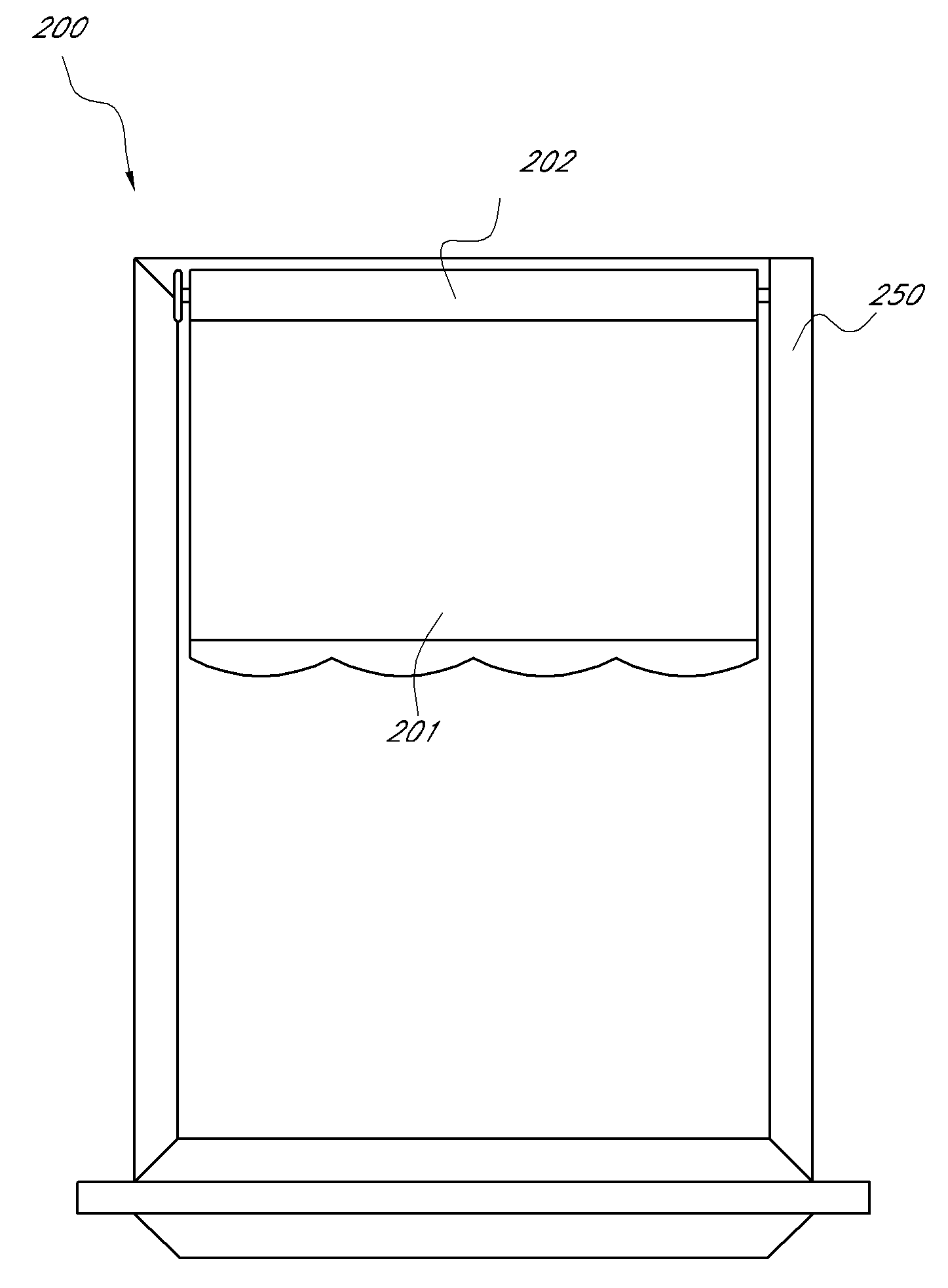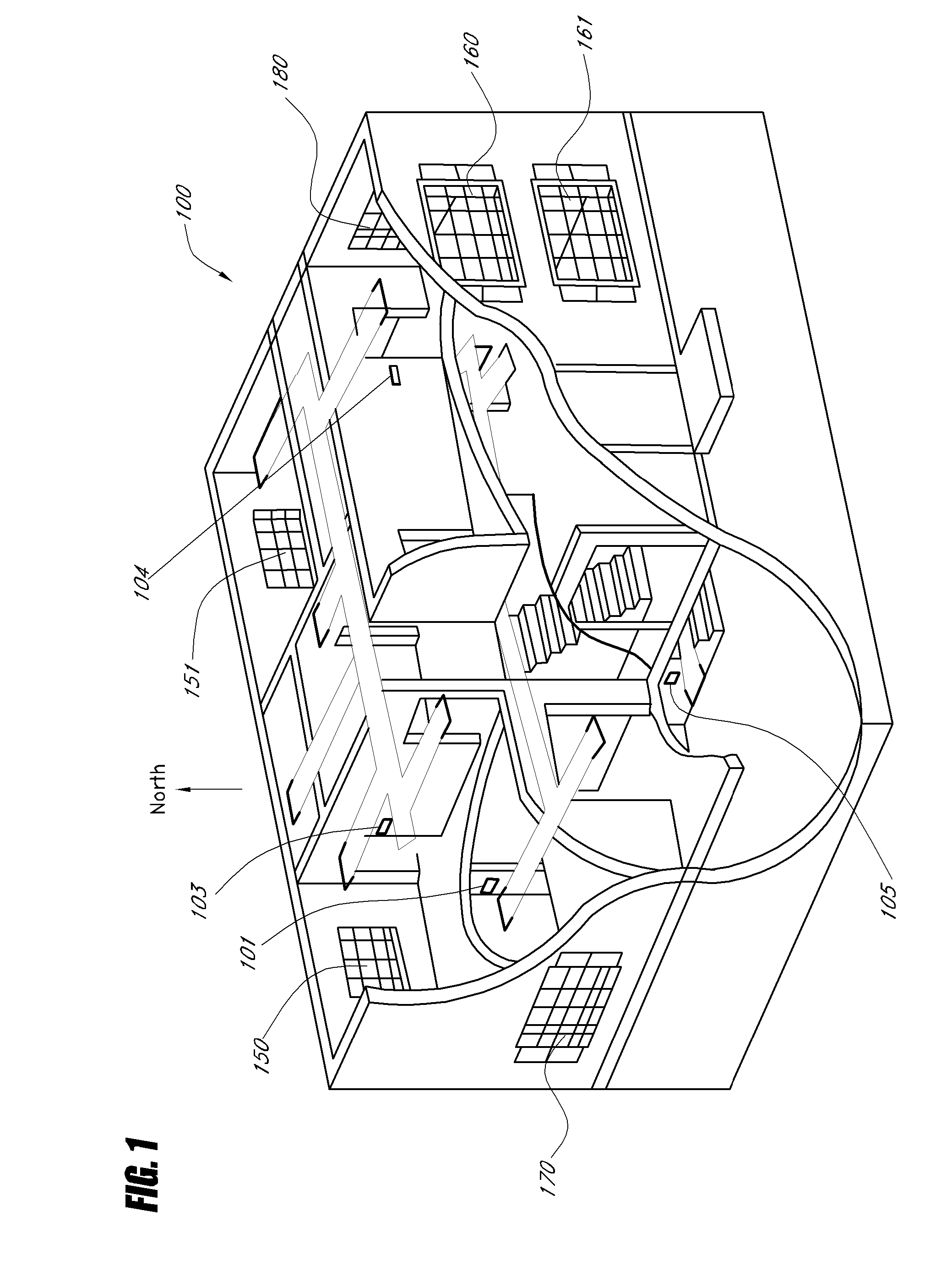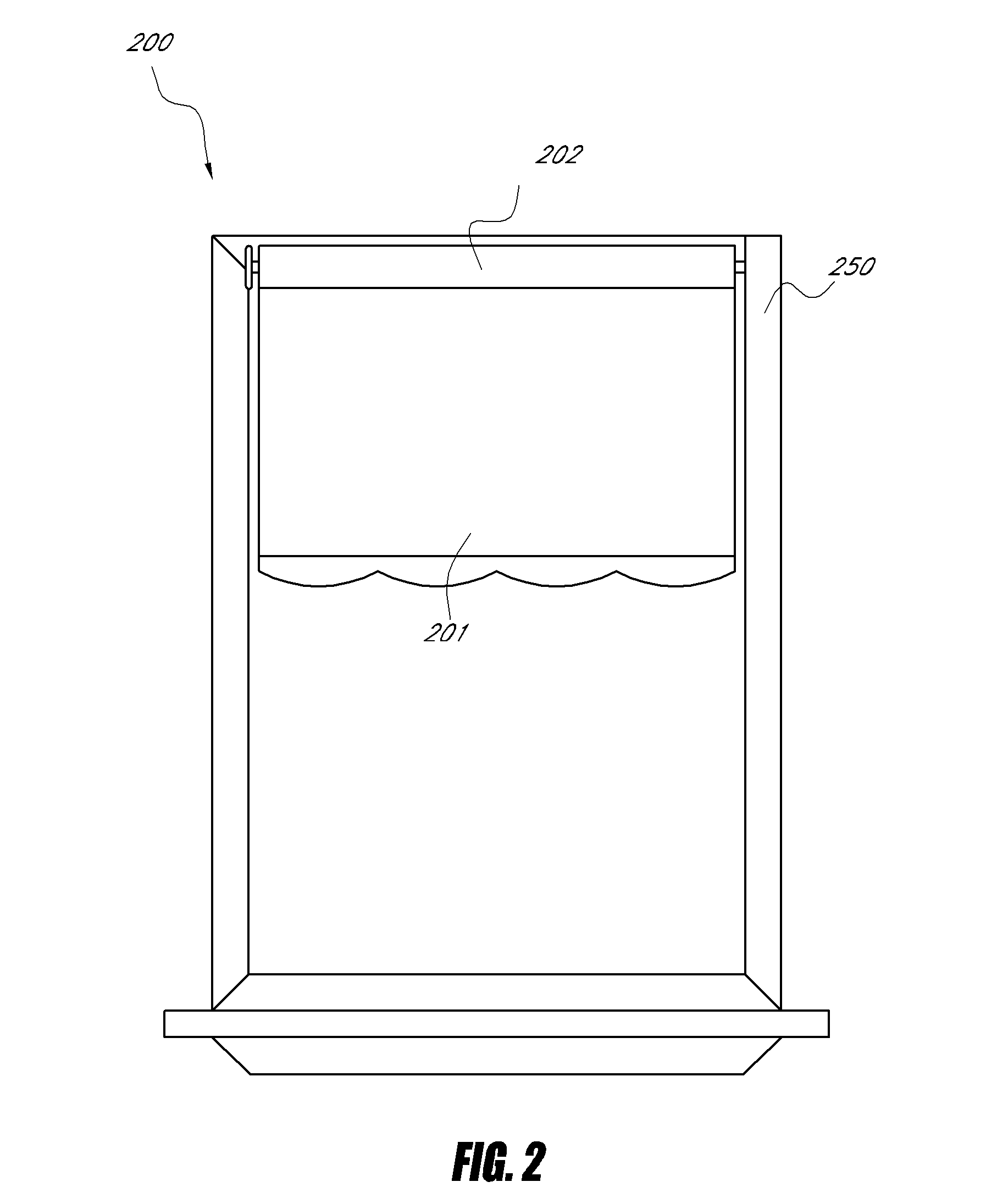Motorized window shade system
a motorized and window shade technology, applied in the direction of door/window protective devices, curtain suspension devices, heating types, etc., can solve the problems of manual operation of shades that cannot receive input from time clocks, photo sensors, occupant sensors or infrared hand held transmitters, and the upward travel of shades out of control. to achieve the effect of raising and lowering the window shad
- Summary
- Abstract
- Description
- Claims
- Application Information
AI Technical Summary
Benefits of technology
Problems solved by technology
Method used
Image
Examples
Embodiment Construction
[0048]FIG. 1 shows a home 100 with ducts for heating and cooling and windows on various sides of the house. For example, the home 100 includes north-facing windows 150, 151, an east-facing window 180, south-facing windows 160, 161, and a west-facing window 170. In the home 100, an HVAC system provides heating and cooling light to the system of windows. In a conventional system, a thermostat monitors the air temperature and turns the HVAC system on or off. In a zoned system, sensors 101-105 monitor the temperature in various areas (zones) of the house. A zone can be a room, a floor, a group of rooms, etc. The sensors 101-105 detect where and when heating or cooling is needed. Information from the sensors 101-105 is used to control motors that adjust the flow of air to the various zones. The zoned system adapts to changing conditions in one area without affecting other areas. For example, many two-story houses are zoned by floor. Because heat rises, the second floor usually requires m...
PUM
 Login to View More
Login to View More Abstract
Description
Claims
Application Information
 Login to View More
Login to View More - R&D
- Intellectual Property
- Life Sciences
- Materials
- Tech Scout
- Unparalleled Data Quality
- Higher Quality Content
- 60% Fewer Hallucinations
Browse by: Latest US Patents, China's latest patents, Technical Efficacy Thesaurus, Application Domain, Technology Topic, Popular Technical Reports.
© 2025 PatSnap. All rights reserved.Legal|Privacy policy|Modern Slavery Act Transparency Statement|Sitemap|About US| Contact US: help@patsnap.com



